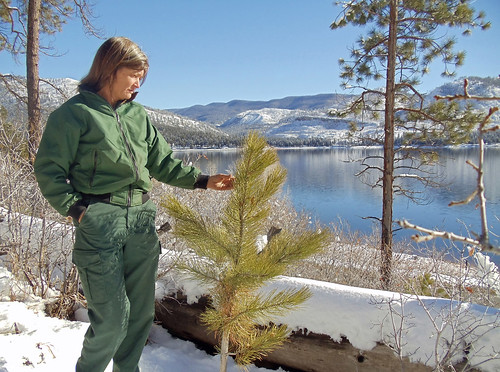
Decades ago, ripe cones were plucked from the tops of conifer trees in the San Juan National Forest and sent to Nebraska for storage in a U.S. Forest Service nursery. This winter, tiny seeds from those cones have been sown in the nursery with the big mission of returning home to create new forests in southwestern Colorado.
Donations to the San Juan National Forest Plant-A-Tree Program will help return the little trees to their native environment in 2015, when 250 acres burned by the 72,000-acre Missionary Ridge Fire will be replanted.
“We’ll plant limber pine seedlings in the more rocky areas,” said San Juan National Forest Forester Gretchen Fitzgerald. “Douglas fir will be tucked into north- and east-facing slopes because they like cooler, moister conditions. Ponderosa pines can go just about anywhere; they’re very drought tolerant.”
Some of the forests burned by the 2002 wildfire have had a hard time regenerating naturally. Although a few young trees have recolonized the burned slopes around Vallecito Reservoir, Fitzgerald hopes to augment the natural process.
“We’ve seen pockets of natural regeneration where surviving trees have dropped cones or squirrels have dispersed cones,” she said. “But on southwest-facing slopes, where we have the harshest conditions, natural regeneration is harder to find.”
The circle of life for the native seedlings began back in the late 1970s, when ripe ponderosa pine and Douglas fir cones were picked for use during future reforestation efforts in the Beaver Meadows area. The cones were dried and shipped to the Charles E. Bessey Nursery in Halsey, Neb., where their seeds were extracted, cleaned and put into cold storage. Just last year, the same process was followed with cones collected from limber pines at Vallecito.
“The nursery has tested our seeds for viability and is planting them right now in greenhouses,” Fitzgerald said. “The seedlings will get artificial light and extra water to grow faster than they would under normal conditions.”
A year from now, after the seedlings have been tricked into thinking they’ve grown for two full seasons, they’ll be pulled from their cozy greenhouses and put outside. For two months, they’ll receive little water as temperatures drop and sunlight shortens. After they go dormant, the seedlings will be packed in soil, frozen and delivered to the San Juan National Forest where they will be stored at the Vallecito Work Center. Prior to the seedlings arrival, Fitzgerald will flag the perimeters of the area to be planted and produce a map for contractors, who will be hired to plant the baby trees. The seedlings will be planted when outside temperatures reach 40 degrees Fahrenheit.
“To be successful, we have to get them in the ground within three weeks from the time they thaw,” Fitzgerald said. “We’ll plant in late spring 2015, so the little trees can capture moisture from snowmelt to get off to a good start.”
